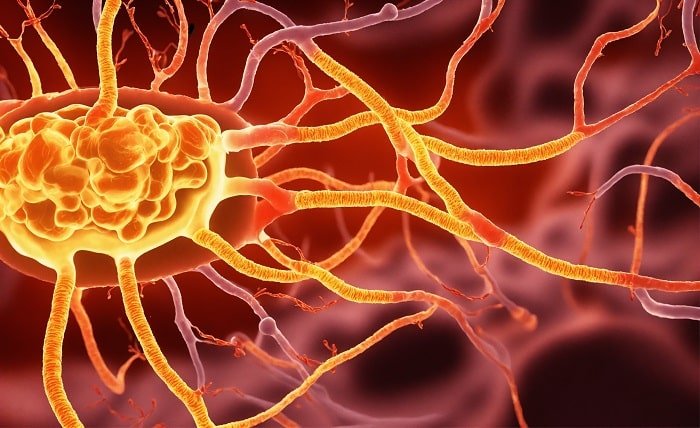Introduction
Mitosis, the process by which a single cell divides to produce two identical daughter cells, is a fundamental aspect of life. This process ensures that each new cell receives a complete set of chromosomes, maintaining genetic consistency throughout cellular generations. However, errors in mitosis can lead to severe consequences, including cancer and other genetic disorders. This blog post will delve into the critical nature of error-free mitosis, exploring its mechanisms, the potential risks of errors, and the implications for overall cellular health.
Mitosis
Mitosis is a type of cell division that results in two daughter cells each having the same number and kind of chromosomes as the parent nucleus. It plays a vital role in growth, development, and tissue repair. The stages of mitosis include prophase, metaphase, anaphase, and telophase, followed by cytokinesis, which splits the cytoplasm and cell membrane.
The Phases of Mitosis
Each phase of mitosis has specific tasks and is crucial for the accurate replication and separation of chromosomes:
- Prophase: Chromatin condenses into visible chromosomes, and the mitotic spindle begins to form.
- Metaphase: Chromosomes align at the metaphase plate, ensuring they are ready for equal separation.
- Anaphase: Sister chromatids separate and move toward opposite poles of the cell.
- Telophase: Chromatids arrive at the poles, and the nuclear envelope re-forms around them.
- Cytokinesis: The cell’s cytoplasm divides, creating two separate cells.
Importance of Accuracy in Mitosis
Accuracy in mitosis is paramount because it ensures genetic stability. Errors during mitosis can lead to aneuploidy, where cells have an abnormal number of chromosomes. This can result in various genetic disorders and contribute to the development of cancers.
Causes of Mitosis Errors
Errors in mitosis can arise from multiple sources, including:
- Genetic Mutations: Mutations in genes that regulate mitosis can disrupt the process.
- Environmental Factors: Exposure to radiation, toxins, or chemicals can damage DNA and interfere with mitotic mechanisms.
- Cellular Stress: Conditions like oxidative stress can impair cellular machinery, leading to mitotic errors.
Consequences of Mitotic Errors
When mitosis goes wrong, the consequences can be dire. Some potential outcomes include:
- Cancer: Errors in mitosis can lead to uncontrolled cell division, a hallmark of cancer.
- Genetic Disorders: Aneuploidy resulting from mitotic errors can cause conditions like Down syndrome and Turner syndrome.
- Cell Death: Severe errors can trigger apoptosis, leading to cell death and tissue damage.
Mechanisms Ensuring Error-Free Mitosis
The cell has several mechanisms to ensure the accuracy of mitosis, including:
- Checkpoint Proteins: These proteins monitor the progression of mitosis and can halt the process if errors are detected.
- Repair Mechanisms: DNA repair enzymes fix any damage before mitosis proceeds.
- Spindle Assembly Checkpoint: This checkpoint ensures that chromosomes are properly attached to the spindle before anaphase begins.
Research on Mitosis and Error Prevention
Ongoing research aims to understand mitosis better and develop ways to prevent errors. Studies focus on the molecular mechanisms of mitosis, the role of specific genes and proteins, and potential interventions to correct or prevent errors.
Clinical Implications of Mitotic Errors
Mitotic errors has significant clinical implications. By identifying and targeting the causes of these errors, researchers hope to develop new treatments for cancer and genetic disorders. Therapies that enhance the accuracy of mitosis could improve patient outcomes and reduce the incidence of mitosis-related diseases.
Mitosis and Cancer Therapy
Many cancer therapies target cells that divide rapidly, including those with mitotic errors. Drugs like taxanes and vinca alkaloids disrupt the mitotic spindle, preventing cancer cells from dividing. Research is also exploring more specific targets within the mitotic machinery to create more effective and less toxic treatments.
Future Directions in Mitosis Research
The future of mitosis research holds promise for new discoveries and therapeutic strategies. Advances in imaging technology, genetic engineering, and molecular biology are opening new avenues for understanding and manipulating mitosis. These developments could lead to breakthroughs in treating cancer and other diseases caused by mitotic errors.
Conclusion
The process of mitosis is fundamental to life, ensuring the accurate replication and distribution of genetic material. However, errors in this process can have severe consequences, leading to diseases such as cancer and genetic disorders. By understanding the mechanisms that ensure error-free mitosis and the factors that can disrupt it, researchers and clinicians can develop better strategies to prevent and treat mitosis-related diseases. The ongoing study of mitosis will continue to be crucial in advancing our knowledge of cellular biology and improving human health.
FAQs
- What is mitosis, and why is it important? Mitosis is the process by which a cell divides to produce two identical daughter cells. It is crucial for growth, development, and tissue repair.
- What are the main phases of mitosis? The main phases of mitosis are prophase, metaphase, anaphase, and telophase, followed by cytokinesis.
- What can cause errors in mitosis? Errors in mitosis can be caused by genetic mutations, environmental factors, and cellular stress.
- How do errors in mitosis lead to cancer? Errors in mitosis can lead to uncontrolled cell division, resulting in the formation and growth of tumors, a hallmark of cancer.
- What are some clinical implications of understanding mitosis? Understanding mitosis can lead to the development of new treatments for cancer and genetic disorders, improving patient outcomes and reducing disease incidence.





